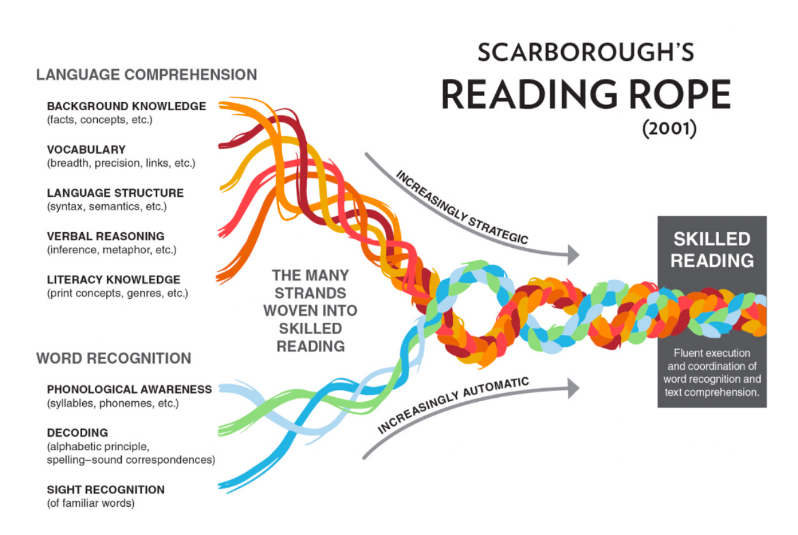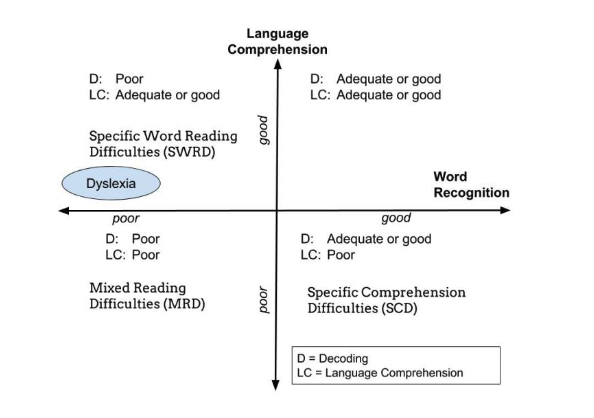Research
Scarborough's Reading Rope
The key principles behind how reading is taught at Mayflower Academy is based on the “Reading Rope” by Scarborough, H. S. (2001). We recognise that although there are many strands of teaching reading, a true reader is not an independent, fluent and confident reader unless all the strands are combined.
Pupils are able to decode, comprehend, read with pace and fluency, but also use their imagination to explore the wonders of reading and transfer reading in the classroom, into reading for information, knowledge, skills and pleasure; being able to adapt any form of reading for the real world. Working together with a committed, dedicated team, (including parents, students, volunteers and the library teams) we ensure that each and every child at Mayflower has access to the very best, high quality texts, including the classics, the very latest titles and digital literacies.
Reading is taught through proven evidence based techniques and systems, focusing on whole class teaching of reading approaches. Pupils are taught meta-cognitive self-regulation strategies to ensure that they become true readers, ready to read in the “real world”, for “real purposes”. High quality interventions are available before and after school for pupils. Pupils and families are encouraged to join in with Reading for Pleasure Challenges, access books through our links with the local Library and join in with Community Reading events.

The Simple View of Reading
The Simple View of Reading (SVR) was proposed by researchers Gough and Tunmer in 1986. The Simple View of Reading shows us that, while reading is a complex activity, it can be represented as two interdependent processes: Word recognition (decoding) and language comprehension.
Word recognition is the ability to read and understand the words on a page, and language comprehension is the ability to make sense of the language we hear and the language we read. Considering the two processes in the SVR, there are in fact four possible outcomes, or reading profiles, and for each of these profiles, individual students’ difficulties may range from mild to severe.
Using the SVR model allows staff to identify the reading needs of the pupils at Mount Wise and therefore create bespoke, targeted reading interventions.

